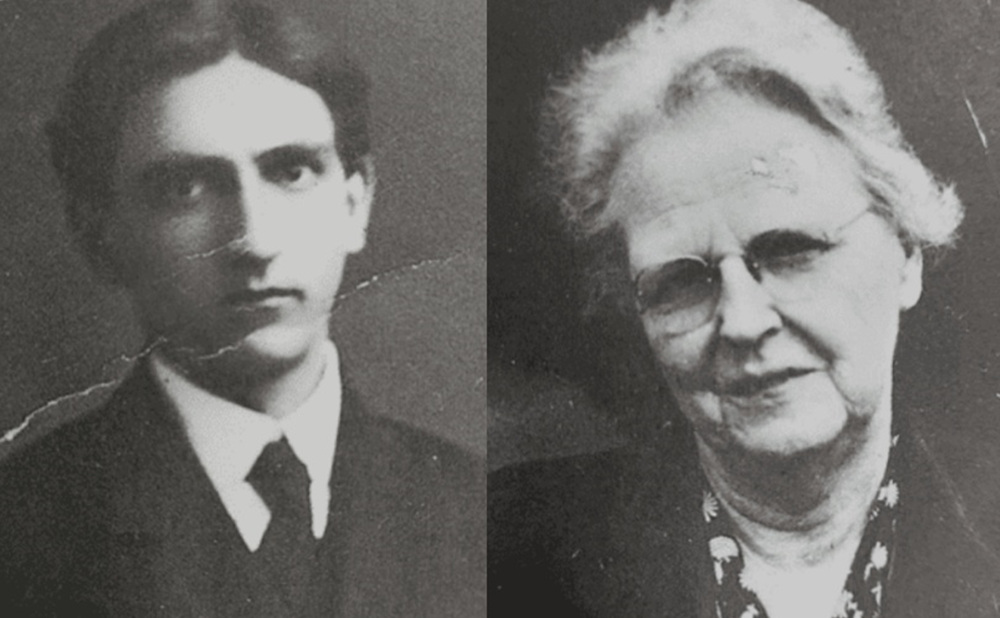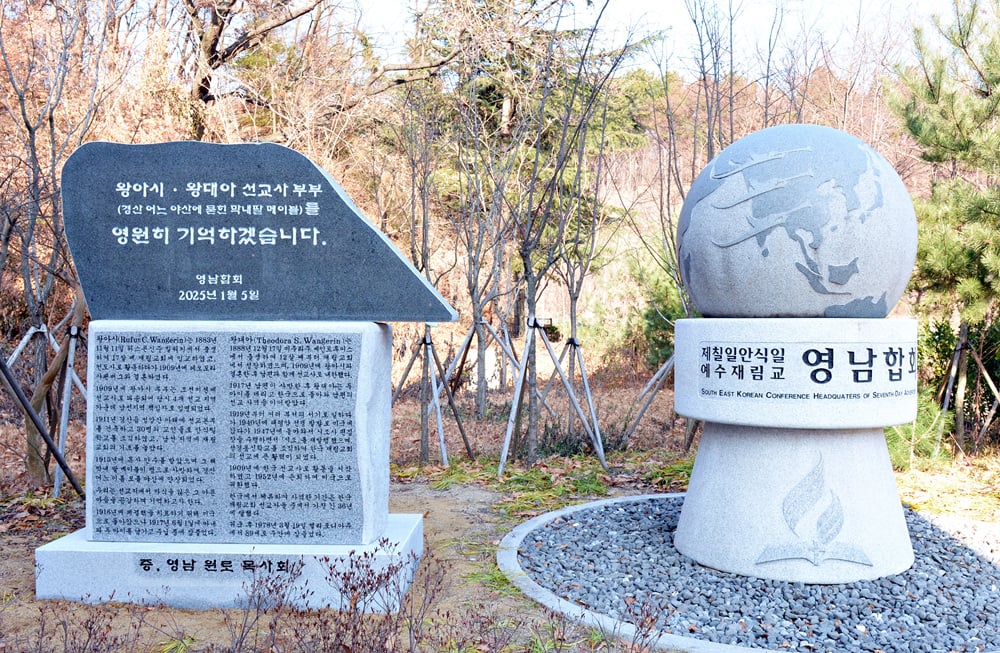
■ Rufus Conrad Wangerin (Known in Korea as Wang AhShi)
Missionary Rufus Conrad Wangerin was born in Milwaukee, Wisconsin, on November 11, 1883. At 17, he embraced the Seventh-day Adventist faith and was baptized. While serving as an evangelist, he married Theodora Scharffenberg in 1909.
Shortly after the wedding, on October 18, 1909—responding to a call from the Korean Mission—he and his wife arrived in the unfamiliar land of Korea. It was a harsh time under the colonial rule of Imperial Japan.
At that time, Pastor Wangerin was appointed head of the Mission Field in Southern Korea (then known as the Namseon region), which included four significant territories: Yeongnam, Chungcheong, Honam, and Jeju. In 1911, he helped establish a missionary headquarters at the foot of Seongam Mountain in Gyeongsan and organized a Sabbath School with 30 members. Their ministry began in a simple tent on a barren field, as no church building was available.
Pastor Wangerin laid the foundation for Adventist work in the southern region and was ordained in 1915. Tragically, that same year, he and his wife lost their youngest daughter, Mabel—born in Korea—to illness. They buried her in an unmarked hillside grave in Gyeongsan, quietly committing their grief and pain to God and pledging to continue their gospel work.
In 1916, Pastor Wangerin returned to the United States to receive treatment for tuberculosis. Sadly, on June 1 of the following year, he passed away, leaving behind his wife and two children.

■ Theodora Scharffenberg Wangerin (Known in Korea as Wang DaeAh)
Born on December 17, 1888, in St. Louis, Missouri, Theodora Scharffenberg Wangerin was the younger sister of Mimi Schaffner, recognized as the first female missionary of the Seventh-day Adventist Church in Korea and a pioneer of women’s education there. Theodora was raised in the Adventist faith from age 12, and after marrying Pastor Wangerin, she followed him to Korea to serve as a missionary. Even after Pastor Wangerin passed away in 1917, Theodora returned to Korea with their two children to continue her husband’s missionary endeavors.
Beginning in 1919, she served as a secretary in various departments of the local mission. However, with the expansion of World War II and intensifying oppression under Japanese rule, she returned to the United States in 1940. Once the war ended, she returned to Korea in 1947 to serve as editor-in-chief of the Sign of the Times, reviving its publication and founding the Bible Correspondence School—efforts that greatly strengthened the Adventist mission throughout Korea.
After first arriving in Korea in 1909, Theodora devoted 36 years to ministry, retiring in 1952 and returning to the United States. This marks the longest period that any foreign Adventist missionary served in Korea. She passed away on March 19, 1978, at the age of 89, in California, cherishing the hope of resurrection in Christ.
Thanks to the selfless dedication and sacrifice of these missionaries—who came to a place they had neither heard of nor could locate on a map—the three angels’ messages continue to be powerfully proclaimed in Korea today. Though their stories are now part of history, they remain very much alive in the present, inspiring the Church’s ongoing mission
